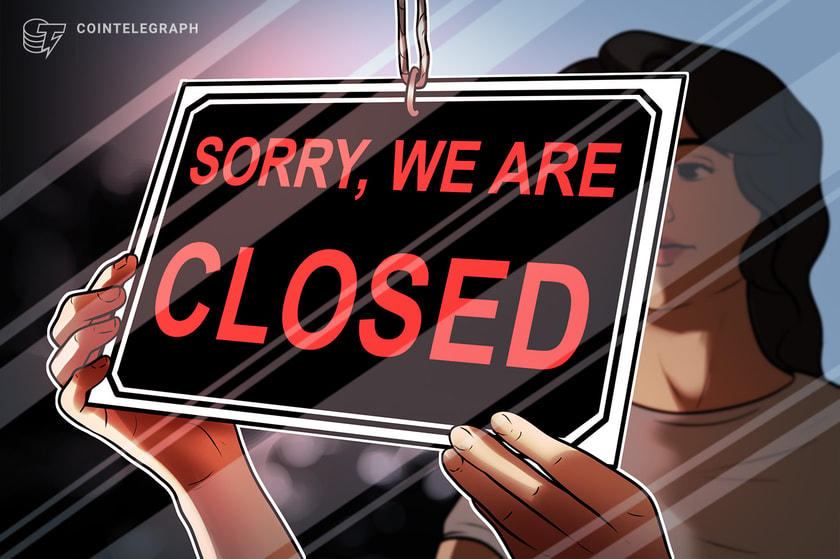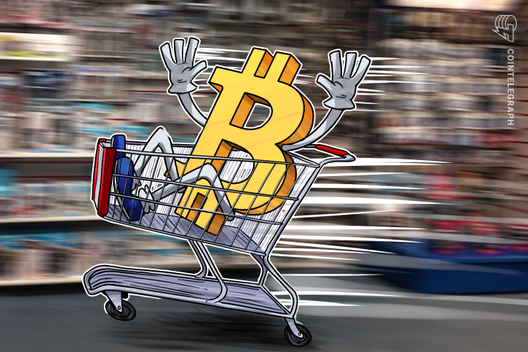Obscure Problems Crypto Users Can Face, Explained
1.
Can withdrawing funds ever be an issue?
There is always a risk of this — and even big exchanges aren’t immune.
As a case in point, take a look at Bitfinex. At the time of writing, according to CoinMarketCap, it was the 25th-largest crypto exchange by trade volume. But, despite its popularity, disgruntled users have claimed they have experienced long delays when trying to make fiat withdrawals on the platform. As Cointelegraph reported back in November, its concerning performance has drawn parallels with the fate of Mt. Gox — a now-defunct exchange after suffering a major cyber attack.
There have been calls for the exchange to be more transparent about its business practices in order to assuage the fears of concerned crypto holders. Some exchanges have begun to capitalize on this by showing customers full details of how they handle money — with real-time updates on transaction volumes and assets in reserve.
Indeed, issues with withdrawals may have nothing to do with your crypto exchange at all. In some cases, banks and financial institutions may intentionally block such transactions coming in from exchanges because it could put their license at risk or land them in hot water with regulators, resulting in eye-watering fines. This can be because they are obliged to verify identities and prevent money launderers or fraudsters from using their services.
Like with any financial decision, it’s crucial to do your due diligence before committing to an exchange. Don’t always go with the biggest platform. Instead, read impartial reviews from those who currently use a service — and always research an exchange’s approach to transparency, as well as the fees and waiting times they attach to withdrawals. Also, make sure your bank won’t go into a meltdown.
2.
What happens if I send my coins to the wrong address?
Policies will vary depending on the exchange you’re using.
While you might face exorbitant “cross-chain recovery fees” on some platforms, others will be unable to assist you in the quest to recover the tokens transferred. Let’s take a look at the policies of the two largest exchanges to give you a flavor of what to expect:
Binance, by far the biggest crypto exchange by trade volume, has bad news for those who have made an honest mistake. The platform warns that, in such a scenario, it “does not know who controls those addresses and has no means of recovering those coins.” Its best advice — if you know who owns the address — is to get in touch with them and start negotiating a refund. What they won’t tell you is that success rates can be extremely patchy.
Over at OKEx, they take a different approach — but with the caveat that their constant reminders should encourage users to check, double-check and triple-check whether they are sending coins to the correct address. That said, if a mistake still happens, the exchange says: “We promise to help recover the funds. […] even if many other exchanges found it impossible.”
Because of the wild variations in policies, remember these two simple tips. First, copy and paste wallet addresses instead of typing them out manually. As they are long and complicated, there is a high risk of typos. Second, always double-check to ensure the characters match up before you hit the Send button.
3.
Could my transactions be left unconfirmed?
This is when transactions are left incomplete because they haven’t been included in a block.
When it comes to Bitcoin, this can happen in the immediate aftermath of a transfer, given it can take a while for a transaction to be included in a block. Fees are also a factor, and the lower it is, the lower the priority your transaction will take in the network — potentially prolonging the wait for confirmation. This problem can become compounded when the network gets busy.
There is a risk of double-spending from unconfirmed transactions by accident — but don’t worry, as your transaction won’t be able to be confirmed until the parent transaction is cleared.
Patience is a virtue in these situations, but do remember that you could be waiting for a couple of weeks. If the transaction gets stuck, funds are returned to the source wallet, and the transfer can be tried again with a higher fee to ensure that it is prioritized in the pecking order the next time around.
4.
What happens if I forget destination tags or memos?
This will largely depend on the type of wallet you’re using, but some do accept transactions even though this data is absent.
As a crash course, destination tags are used for transactions involving Ripple, while memos are a string of numbers and letters to ensure Stellar reaches the correct recipient.
Using the wrong information — or forgetting it altogether — needn’t be catastrophic. Let’s return to those big exchanges to find some examples of how they deal with such situations. Binance can help as long as you’ve reached a specified level of verification and submit account details along with transaction IDs and the tags or memos you intended to add in the first place. A video is also needed to help the exchange verify that the request is genuine, with the exchange stressing that it can take a while for a request to be fully processed.
Other exchanges, such as DragonEx, have a similar procedure — and require details about the nature of a transaction, along with a clip of you opening the wallet and navigating to the page where the transaction took place. Meanwhile, Changelly offers reminders about the importance of this data, helping to reduce the risk of this step being missed. Their support team can also assist if mishaps occur.
5.
How can I recover my crypto if I end up in an orphaned block?
Although valid and verified, orphan blocks are not accepted into a network after suffering a time lag — leaving them in isolation.
Most common with Bitcoin, they are usually rejected when two miners have inadvertently produced a block near simultaneously. Only one block can win — and the victor is decided based on which block has a greater proof-of-work. In other scenarios, hackers can create orphan blocks when they attempt to reverse transactions.
If you do find yourself in an orphaned block, the best thing to do is wait for your crypto to be recovered. Your transaction will go back into the queue, and the odds are that it will normally be included in a subsequent block. It’s a more frequent occurrence than you may think.
6.
I sent a transaction with a tiny fee! What do I do?
Relax. You have options.
For fear of sounding like a broken record, you can wait. In some cases, you might get lucky and see your low-fee transaction go through when there is a lull in the network. Worse comes to worst, the transaction will be forgotten — meaning you can attempt it once again with a higher fee to ensure it doesn’t get stuck, as the funds will remain at the address where you tried to send it from in the first instance.
Platforms such as Changelly are aiming to remedy this type of mistake by informing users if the crypto funds they are sending are too small to cover the transaction fees that will be incurred. The exchange tells users about the minimum amounts that can be sent, and this is factored into the transaction fees it charges. Along with this safeguard, the platform recommends double-checking for typos before completing a transaction — helping to prevent unpleasant scenarios that result in failed and non-refundable transactions.
Disclaimer. Cointelegraph does not endorse any content or product on this page. While we aim at providing you all important information that we could obtain, readers should do their own research before taking any actions related to the company and carry full responsibility for their decisions, nor this article can be considered as an investment advice.









